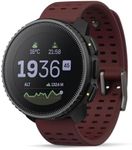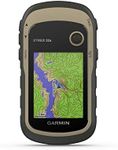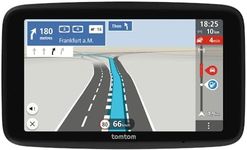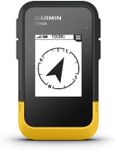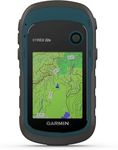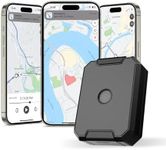Buying Guide for the Best Hiking Gps
Choosing the right hiking GPS can significantly enhance your outdoor adventures by providing accurate navigation and safety features. When selecting a hiking GPS, consider the terrain and conditions you'll be exploring, as well as your personal preferences for features and usability. A good hiking GPS should be reliable, easy to use, and have the features that match your hiking style and needs.AccuracyAccuracy in a hiking GPS refers to how precisely the device can determine your location. This is crucial for navigation, especially in remote or challenging terrains where getting lost can be dangerous. GPS accuracy is often measured in meters, with lower numbers indicating better precision. For most hikers, an accuracy of 3-5 meters is sufficient. If you plan to hike in dense forests or deep canyons, look for a GPS with multi-band technology or additional satellite support (like GLONASS or Galileo) to improve accuracy.
Battery LifeBattery life determines how long your GPS can operate before needing a recharge or new batteries. This is important for long hikes or multi-day trips where access to power sources is limited. Battery life can range from a few hours to several days. If you are a day hiker, a GPS with 10-15 hours of battery life may suffice. For longer treks, consider models with replaceable batteries or solar charging options to ensure you won't run out of power.
DurabilityDurability refers to how well the GPS can withstand harsh outdoor conditions, such as rain, dust, and drops. A durable GPS is essential for hiking in rugged environments. Look for devices with a high IP rating (e.g., IPX7 or IPX8) for water resistance and robust casing materials. If you often hike in extreme weather or rough terrains, prioritize a GPS with a rugged design to ensure it can handle the elements.
DisplayThe display of a hiking GPS affects how easily you can read maps and data. A clear, bright display is important for visibility in various lighting conditions, including direct sunlight. Display sizes vary, with larger screens offering more map detail but potentially being bulkier. Touchscreens are convenient but may be less responsive in cold or wet conditions. Consider your typical hiking environment and whether you prefer a larger screen for detailed navigation or a smaller, more portable device.
Mapping and Navigation FeaturesMapping and navigation features include preloaded maps, the ability to add custom maps, and navigation aids like waypoints and route planning. These features are crucial for planning and following your hiking routes. Some GPS units come with topographic maps, which are useful for understanding terrain. If you hike in unfamiliar areas, look for a GPS with comprehensive mapping options and easy-to-use navigation tools. For those who enjoy exploring off-trail, advanced features like route tracking and geocaching support can be beneficial.
Size and WeightSize and weight are important for portability and ease of use. A compact, lightweight GPS is easier to carry and handle, especially on long hikes. However, smaller devices may have smaller screens and fewer features. Consider how much weight you are willing to carry and whether you prefer a device that fits easily in your pocket or backpack. If you prioritize portability, opt for a smaller, lighter model, but ensure it still meets your feature requirements.
User InterfaceThe user interface of a hiking GPS affects how easily you can operate the device. A simple, intuitive interface is important for quick access to features and information, especially in challenging conditions. Some devices offer customizable menus and shortcut buttons for frequently used functions. If you are new to using GPS devices, look for models with straightforward interfaces and clear instructions. Experienced users might prefer more advanced interfaces with additional customization options.


